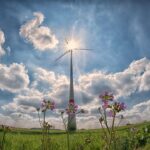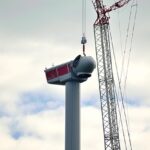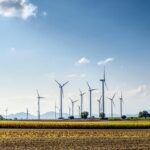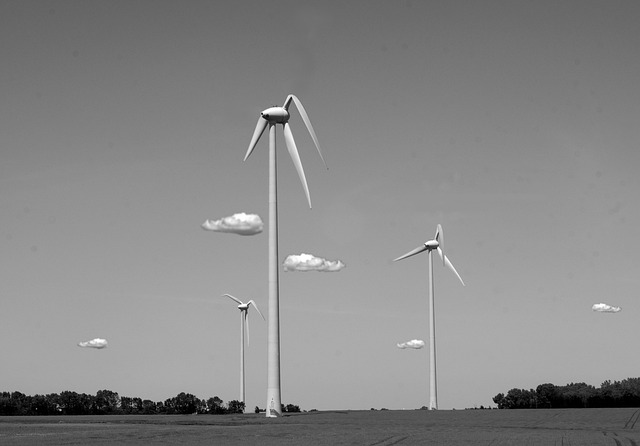A Breath of Fresh Air: The Community Benefits of Wind Energy
In an era dominated by climate concerns and the urgent need for sustainable energy solutions, wind energy stands out as a beacon of hope. As communities around the globe begin to recognize the multitude of benefits that wind energy can bring, the transition to renewable power sources becomes increasingly palpable. This article explores the diverse advantages that wind energy offers to communities, from economic growth to environmental protection, and how it is shaping a sustainable future for generations to come.
Understanding Wind Energy
Wind energy is generated by harnessing the kinetic energy of moving air—essentially turning it into electricity. Wind turbines, strategically positioned in areas with consistent wind patterns, convert wind movement into electrical power in an environmentally friendly manner. Unlike fossil fuels, wind energy is renewable and produces no harmful emissions, making it an attractive option for communities looking to reduce their carbon footprint.
Economic Revitalization
One of the most immediate benefits of wind energy is its capacity to invigorate local economies. The installation of wind farms generates job opportunities across various sectors, ranging from construction to maintenance. Wind energy projects often lead to:
Job Creation: The construction and operational phases of wind projects necessitate a skilled workforce, offering numerous employment opportunities both during the initial setup and the ongoing maintenance. Jobs range from engineering and manufacturing to site management and environmental assessment.
Infrastructure Development: Wind farms often require a substantial amount of infrastructure, such as roads, electrical lines, and possibly upgrades to local power grids. This infrastructural investment can benefit the broader community by improving access and functionality.
Increased Local Tax Revenues: Wind farms contribute to local tax bases, providing municipalities with additional funds to support essential services such as schools, roads, and public safety initiatives. These tax revenues are critical in ensuring that communities can invest in their growth and welfare.
Renewable Energy and Sustainability
The fight against climate change is paramount, and transitioning to renewable energy sources is a key strategy in this global endeavor. Wind energy plays a crucial role in reducing greenhouse gas emissions and combating air pollution. Its benefits extend beyond just the atmosphere; they encompass the entire ecosystem.
Reduction in Carbon Footprint: Wind energy significantly lowers carbon emissions when compared to fossil fuel-based power sources. Communities adopting wind energy contribute meaningfully to meeting national and global emissions reduction targets, fostering a healthier planet for future generations.
Improved Air Quality: Utilizing wind energy reduces the reliance on coal, oil, and natural gas, which are known to pollute the air with harmful emissions. Cleaner air results in better health outcomes for community residents, reducing healthcare costs associated with respiratory problems and other pollution-related illnesses.
Community Empowerment and Engagement
As communities embrace wind energy, they often find that the process encourages greater participation and empowerment among residents. This engagement can manifest in several ways:
Local Involvement: In many cases, wind projects are developed in collaboration with local stakeholders, providing community members with a voice in energy decisions that affect their lives. This not only fosters a sense of ownership but also ensures that developments align with community values and needs.
Educational Opportunities: Wind energy projects can serve as powerful educational tools, where local schools and organizations collaborate to offer workshops and programs highlighting the importance of renewable energy. By engaging the younger generations, communities can cultivate an environmentally conscious mindset that prioritizes sustainability.
Strengthening Energy Independence
In a world increasingly dependent on imported fossil fuels, wind energy can help communities enhance their energy independence. By relying on local wind resources, communities reduce their vulnerability to fluctuations in fuel prices and energy supply chains, thereby bolstering energy security.
Diverse Energy Portfolio: Adding wind energy to the mix diversifies the energy sources available to a community. A varied energy portfolio mitigates the risk associated with reliance on a singular source and ensures a more stable and secure energy supply.
Enhancing Property Values
While some skeptics have raised concerns about the impact of wind turbines on property values, studies have shown that in many cases, wind energy developments can actually enhance real estate value. Properties adjacent to wind farms often appeal to environmentally conscious buyers who prioritize clean energy and sustainability.
Investment in Green Technologies: The presence of a wind farm may signify a community’s commitment to innovation and sustainability, making it an attractive location for modern businesses and residents alike. This outpour of interest can stimulate property development and investment.
Conclusion
Wind energy is more than just a renewable source of power; it represents an opportunity for communities to thrive economically, socially, and environmentally. Its diverse benefits—from job creation and infrastructure development to community empowerment and enhanced property values—highlight its potential to transform lives and construct a sustainable future.
As more communities turn to wind energy, it becomes evident that this clean, renewable resource can be a pivotal aspect of combating climate change while simultaneously fostering local economies. Harnessing the power of wind not only paves the way for environmental stewardship but also for a brighter and more resilient future for all.










